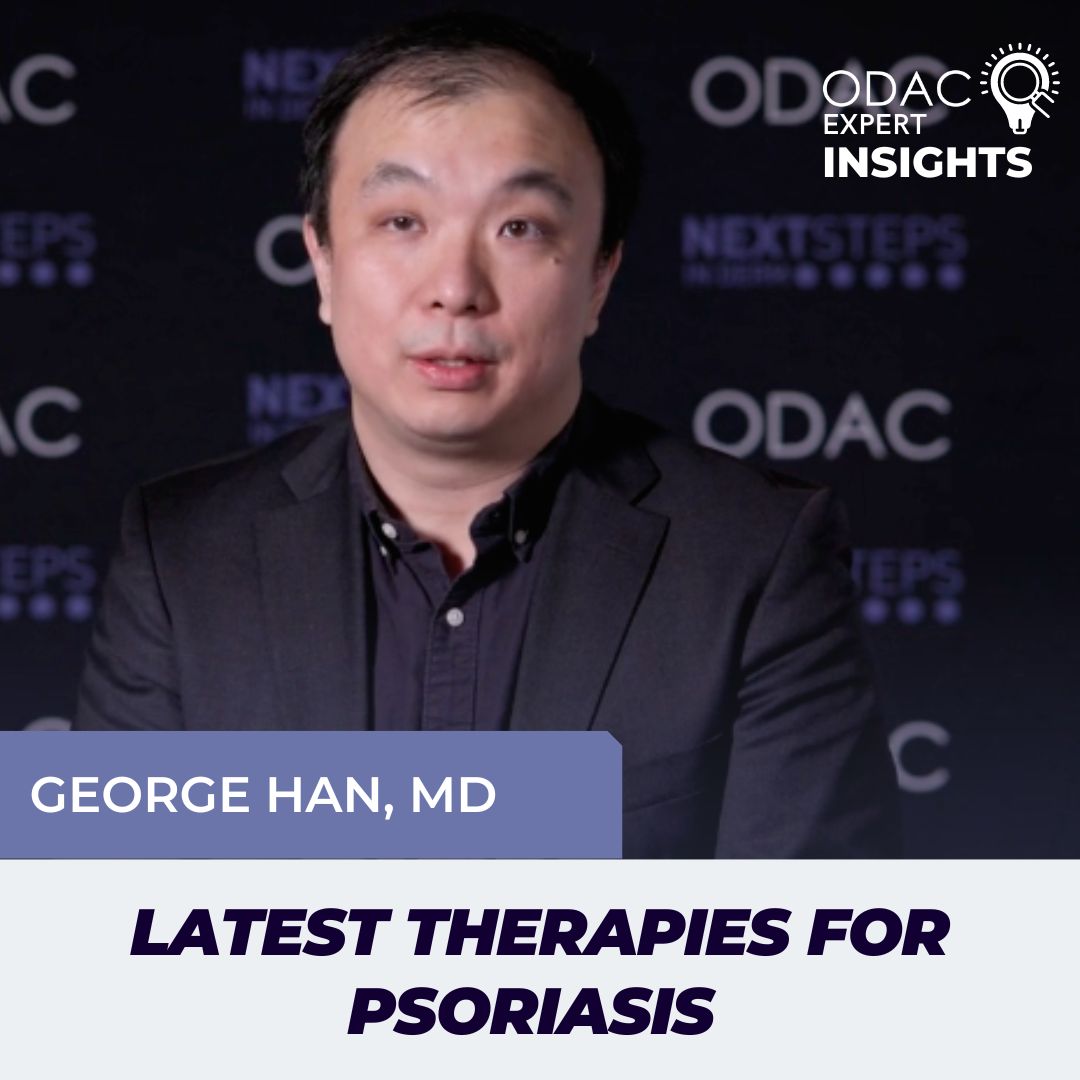Next Steps in Derm, in partnership with ODAC Dermatology, Aesthetic & Surgical Conference, interviewed Dr. George Han, associate professor of dermatology at the Donald and Barbara Zucker School of Medicine at Hofstra/Northwell. Dr. Han shares why it’s an exciting time to treat psoriasis, and why the developments of the past year have bolstered the clinician’s armamentarium. Watch and learn about the benefits of two novel topicals as well as an oral medication that’s a novel class of medicines. Plus don’t forget about phototherapy! Find out why it’s especially important to keep offering that treatment option.
Further Reading
If you want to read more about the latest therapies for psoriasis, check out the following articles published in the Journal of Drugs in Dermatology:
Dermal Safety of Tapinarof Cream 1%: Results From 4 Phase 1 Trials
ABSTRACT
Background: Tapinarof (VTAMA®; Dermavant Sciences, Inc.) is a novel, non-steroidal, topical, aryl hydrocarbon receptor agonist, FDA approved for psoriasis treatment and under investigation for atopic dermatitis treatment as a 1% cream formulation for once-daily (QD) application.
Objective: Evaluate cumulative skin irritation, sensitization, and photoallergic and phototoxic potential of tapinarof cream 1% across a range of dosing frequencies and conditions.
Methods: We conducted 4 randomized, controlled, phase 1 trials of topical tapinarof cream 1% vs vehicle or other appropriate controls in healthy adults. Cumulative skin irritation was assessed following QD application for 21 days under fully occlusive patch conditions. Contact sensitization, photoallergenicity, and phototoxicity were assessed under semi-occlusive patch conditions. The contact sensitization and photoallergenicity trials used an induction phase of repeated applications followed by a 2-week rest period and a 1-time challenge, with rechallenge if responses indicated sensitization/photosensitization; the phototoxicity trial comprised a single application. Ultraviolet A and B irradiation was used to assess photoallergenicity/toxicity.
Results: 376 participants were randomized across the 4 trials. In the cumulative irritation trial, tapinarof cream 1% QD was classified as having a slight potential for very mild cumulative irritation under the exaggerated test conditions of repeated dosing for 21 days. There was no evidence of sensitization, photosensitization, or phototoxicity. Tapinarof was well tolerated and there was a low discontinuation rate across all trials.
Conclusions: Tapinarof cream 1% was well tolerated, non-sensitizing, non-phototoxic, and non-photoallergic, with no evidence of clinically meaningful cumulative skin irritation in 4 dermal safety trials in healthy adults.
ABSTRACT
Background: Roflumilast cream (ARQ-151) is a highly potent, selective phosphodiesterase-4 inhibitor in development for once-daily topical treatment of chronic plaque psoriasis.
Objectives: To assess the safety and efficacy of once-daily roflumilast cream 0.5% and 0.15% in patients with chronic plaque psoriasis.
Methods: This phase 1/2a study enrolled a single-dose, open-label cohort (Cohort 1: 0.5% cream applied to 25 cm² psoriatic plaques), and a 28-day, double-blinded cohort (Cohort 2: 1:1:1 randomization to roflumilast cream 0.5%, 0.15%, or vehicle). Patients had chronic plaque psoriasis of >6 months’ duration with ≤5% body surface area involvement. Outcomes included safety (adverse events) and efficacy (percentage change in the Target Plaque Severity Score [TPSS] × Target Plaque Area [TPA]) at week 4.
Results: For Cohorts 1 (n=8) and 2 (n=89), adverse events (all mild/moderate; none severe or serious) were similar between active arms and vehicle. Treatment-related events were confined to the application site, without differences between drug and vehicle. No patient discontinued treatment due to adverse events. The primary efficacy endpoint was met for both roflumilast cream doses: TPSS×TPA improvement at week 4 was statistically significant for roflumilast 0.5% (P=0.0007) and 0.15% (P=0.0011) versus vehicle; significance was reached as early as 2 weeks. For both roflumilast cream doses, 66%–67% improvement from baseline was observed at week 4, without reaching a plateau, versus 38% improvement for vehicle.
Conclusion: Roflumilast cream was safe and highly effective at doses of 0.5% and 0.15% and represents a potential novel once-daily topical therapy for the treatment of chronic plaque psoriasis.
Did you enjoy this video interview? Find more here.

